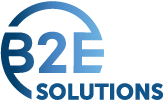Fourth quarter is a busy time in the payroll world. There's so much to get done and if you're not careful, mistakes can easily happen when it comes time to run that very last payroll of the year. To ensure no missteps occur, you likely have your own processes and checklists in place. But have you accounted for everything?
Before running your year-end payroll, make sure your internal checklist includes all items — big and little — that will ensure your final payroll of the year is just as perfect as you planned.
1. Account for all adjustments
Review your reports from the previous year-end to account for unique adjustments that you need to repeat this year. Also make sure to check with your accounting and HR departments to determine whether any taxable payments were processed through accounts payable.
Common year-end adjustments include:
- Gift cards
- Personal use of a company-provided vehicle
- Group-term life insurance over $50,000
- Third-party sick pay
- Employer-paid education not related to a job
- Value of certain awards and prizes
- Nonaccountable business-expense reimbursements
- S-Corp accident/health premiums paid to shareholder employees of 2% or more
- Country club and health club dues
- Cash gifts to employees
- Allocated tips
- Imputed value of domestic partner benefit coverage
Also, if you haven’t done so throughout the year, report additional wage adjustments on the W-2s.
For more information on taxable fringe benefits, review the Employer’s Tax Guide to Fringe Benefits (IRS Publication 15-B).
2. Confirm due dates
You may need to allow extra time for payroll runs that include bonuses, adjustments or larger than normal amounts. If you're using a third-party payroll provider, ask them when they need your payroll information in order to hit your target pay date. The "sooner the better" is usually a good best practice. Additionally, your payroll provider may have holidays you need to work around or hard cut-off dates and times you should keep in mind. Also, if you're still leveraging paper paychecks, make note of postal delivery schedules to avoid unexpected delays during this busy time of year.
If applicable, you will also want to contact your third party sick-pay administrator to confirm when your final benefit amounts will be available so you or your payroll vendor can schedule your year-end processing. Also, determine who will handle the W-2s for these payments (you/your payroll provider or the third-party provider).
3. Review inactive employees
Check if you have any terminated employees with required adjustments and confirm that their information is entered correctly in your records and/or your payroll system. Remember, you may need to gross up adjustments to cover employee portions of Social Security and Medicare taxes. If you don't have a valid address or email for an inactive employee, make sure you have a good place to store their undelivered W-2 (you know they'll eventually come looking for it).
4. Update your payroll system and complete miscellaneous tasks
When you're preparing to run your last payroll of the year, you'll likely unlock related tasks and come across information to update in your records. Examples include:
- Voided or manual checks: Verify that you accounted for all voided and manual checks in your payroll system.
- W-2s: Determine where you will save or store undeliverable W-2 forms and have a process in place to ensure they get saved.
- Employee information: Before issuing W-2s and 1099s, ensure all employee identifying information (i.e., employee records, names, Social Security numbers, addresses) is correct. If you fail to do so, you may need to file a Corrected Wage and Tax Statement (Form W-2c).
- 1099s: Confirm all 1099 recipients have an up-to-date W-9 on file, so you have the information you need to accurately complete and file 1099s with the IRS.
- Pension plans: Determine if you have employees that were “active participants” in a qualified pension plan during the current tax year and that your system is accurate. If you do, the Social Security Administration (SSA) requires that they check box 13 on their form. Review the IRS instructions for more information.
5. Notify employees about electronic W-2s
Encouraging employees to choose electronic W-2s doesn’t just save time; it can also save your company money by eliminating postage costs.
Be sure to remind employees that if they want to receive their W-2 electronically, they should opt out of paper delivery. To do this, employees typically need to log in to the payroll system, provide electronic consent and save their selection. Usually, opt-outs must be completed by a certain date (Dec. 31st for B2E clients) to ensure the employee doesn't miss the window and end up with both a paper and an electronic W-2.
Consider including electronic W-2 opt-in as part of your new hire onboarding process! If you are a B2E client, there is also a handy job aid available in UKG Ready that you can share with your employees to help guide them through the steps to receive an electronic W-2. Download Documents > Year End Group > Document Name - Electronic W2 Job Aid.
Personalize your checklist
While the above list is extensive, there will always be items specific to your business that you'll want to account for. No two businesses are alike, so make sure you've addressed any unique needs in advance of running your last payroll of the year.
To stay up on the latest year-end information and more, sign up for our newsletter and follow B2E Solutions on LinkedIn and Facebook today!
Editor's note: This article was originally published Nov. 19, 2018, and has been updated to reflect the most recent information for 2025 year-end.










